17 Wild Animals in Tonga [Wildlife in Tonga]
Want to know more about the wildlife in Tonga?
Discover 17 wild animals in Tonga in this post, as well as interesting facts about them. 🇹🇴
Learn All About Tongan Animals
Ready to learn all about Tongan animals?
I’ve always been fascinated by animals, and by how they can be so different from one country to another. In this guide, we’ll focus on the many animals Tonga has on the land, in the sky, and underwater.
I’ve split the guide into 5 categories:
- Native animals from Tonga
- Endangered animals of Tonga
- What is Tonga national animal?
- How many animals native to Tonga?
- Are there snakes on the island of Tonga?
Let’s dive in right away with our first category!
Native Animals from Tonga
Tonga is an Oceanian archipelagic country located in the far eastern part of the continent, east of Australia. It is one of the smallest countries in all of Oceania, has been inhabited for about 2,500 years, used to be a maritime empire and a thalassocracy, and used to be a British colony. It is surrounded by the Pacific Ocean and the islands of Wallis and Futuna, New Caledonia, Samoa, Vanuatu, Kermadec, and Niue, and its capital and largest city is Nukuʻalofa, which counts more than 23,000 inhabitants (but more than 74,000 if you include the metropolitan area).
An interesting part of the country that I wanted to tackle is its wildlife. In light of that, I have listed the best of it, and I hope you will love learning what animals live in Tonga.
Here’s the Tonga animals list.
1. Insular flying fox
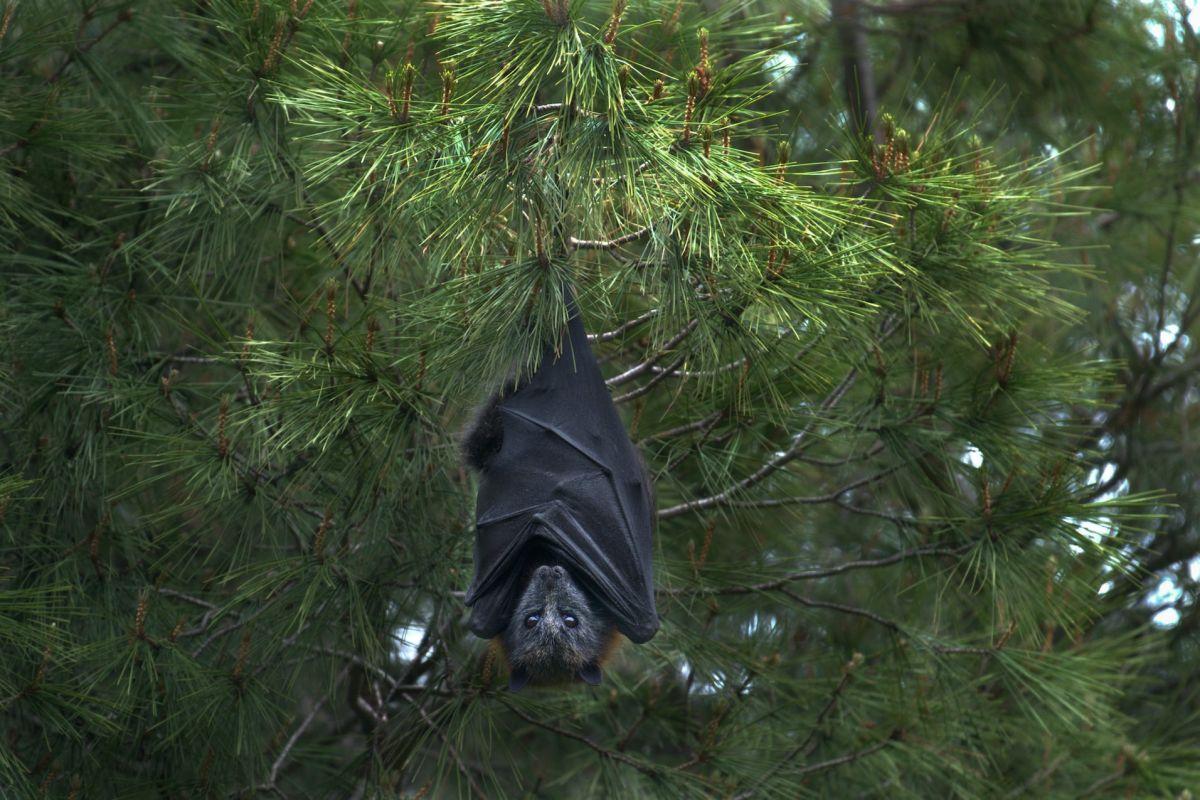
- Name: Insular flying fox
- Scientific name: Pteropus tonganus
- Conservation status:
The insular flying fox, also known as the Pacific flying fox, is a species of flying fox with a wide range, in a multitude of Oceanian islands such as Tonga, Fiji, New Caledonia, Samoa, the Solomon Islands, and the Cook Islands.
This bat roosts in colonies high in the canopy and emerges at night to feed on fruit, pollen, and nectar. It is an important pollinator of several trees within its range.
2. Humpback whale
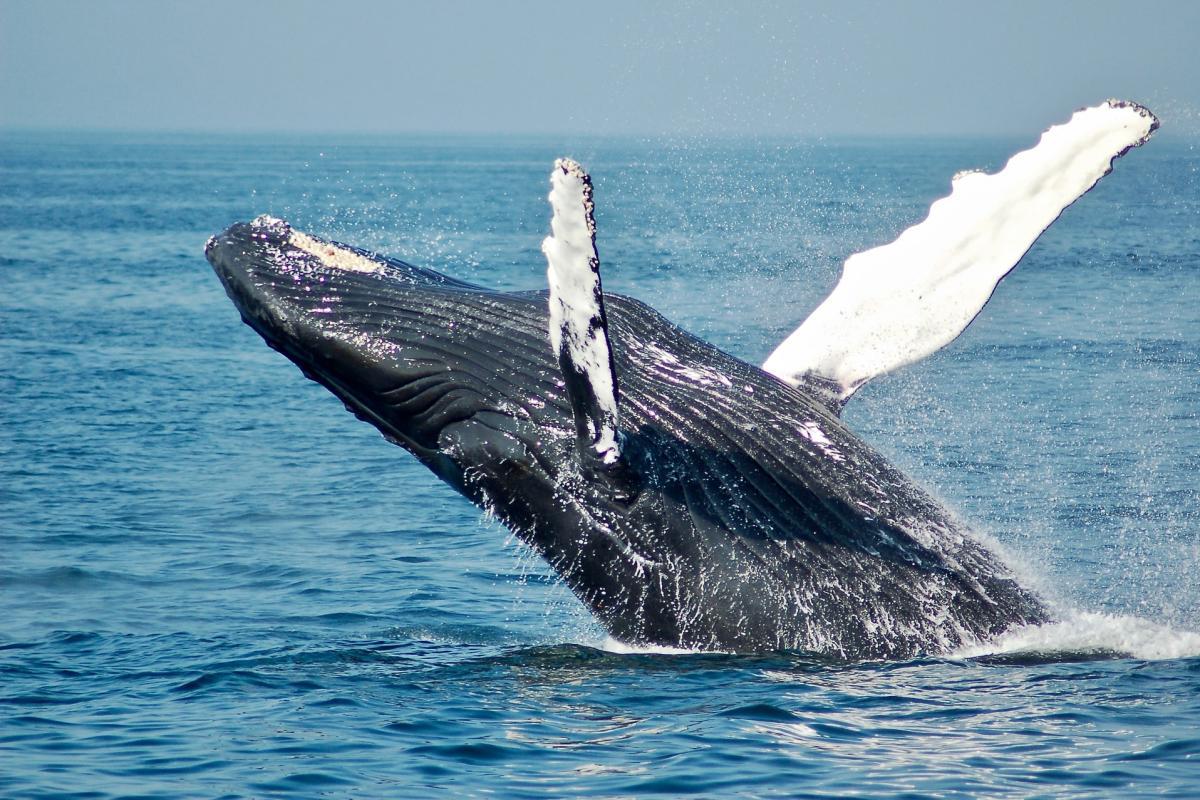
- Name: Humpback whale
- Scientific name: Megaptera novaeangliae
- Conservation status:
Have you ever dreamt of seeing a whale in its natural habitat? If yes, Tonga might be the place to go to!
The humpback whale is a large species of rorqual and baleen whale. It is named after its unusual, large bump on the back, and can be found in seas and oceans around the planet. This whale lives in very different habitats, and can be seen in Tonga (tropical waters) but also migrate 16,000 km / 9,900 mi to Alaska (the northernmost Pacific Ocean).
3. Spinner dolphin
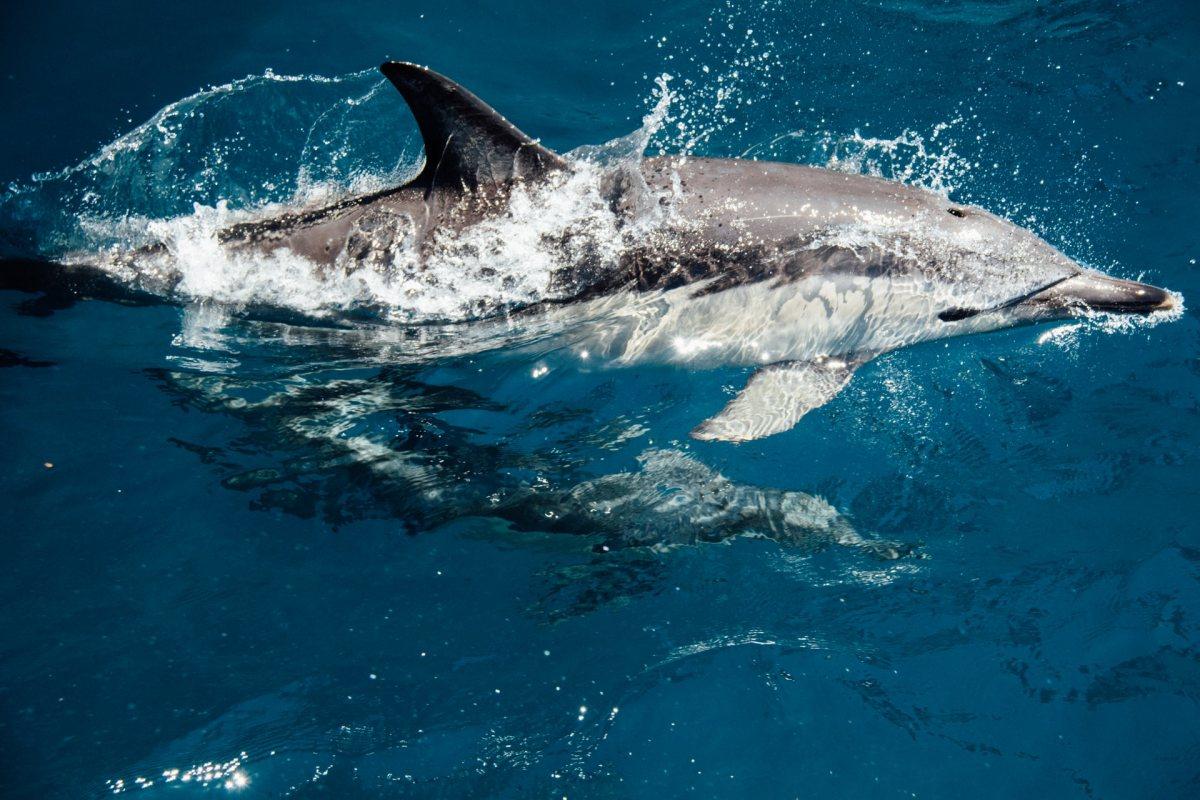
- Name: Spinner dolphin
- Scientific name: Stenella longirostris
- Conservation status:
The spinner dolphin is a small species of dolphin found in off-shore, tropical waters of the world. It is the most well-known dolphin by the public thanks to its spectacular acrobatic displays and presence in marine parks and the media in general.
This dolphin lives near islands, banks, or coastal waters, except in the eastern tropical Pacific, where it stays far from shore at all times. It mainly feeds on shrimp, fish, and squid.
4. Tongan whistler
- Name: Tongan whistler
- Scientific name: Pachycephala jacquinoti
- Conservation status:
The Tongan whistler is a species of bird endemic to the islands of Late and Vava’u in Tonga. There, it can be found in tropical primary forests, as well as wooded plantations and second growth.
In terms of appearance, it is very similar to the Australian golden whistler, but its head is entirely black. This bird is considered near threatened with extinction due to habitat loss and is on the decline.
5. Blue-crowned lorikeet
- Name: Blue-crowned lorikeet
- Scientific name: Vini australis
- Conservation status:
The blue-crowned lorikeet, also known as the blue-crested lory, the Samoan lory, or the Solomon lory, is a species of parrot native to many of the Pacific Islands, including for instance Tonga, Niue, Samoa, and the Lau Islands (which belong to Fiji).
This parrot is particularly colorful, and has, as its name suggests, a bright blue crown on top of its head, but also a red throat.
6. Polynesian starling
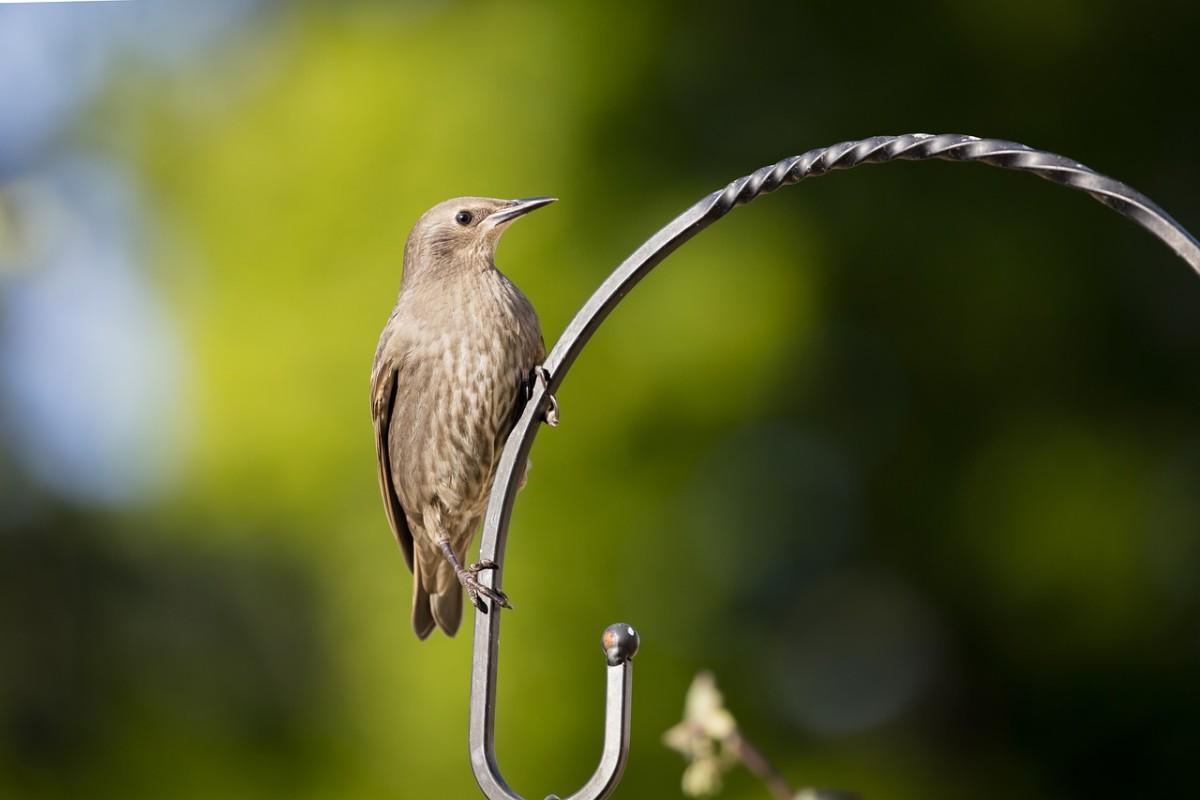
- Name: Polynesian starling
- Scientific name: Aplonis tabuensis
- Conservation status:
The Polynesian starling is a species of starling native to Tonga, the Samoan Islands, the Santa Cruz Islands, Wallis and Futuna, and Niue. It inhabits tropical and subtropical dry forests, as well as tropical moist forests.
This bird has several subspecies within its range. When it comes to dietary habits, the Polynesian starling feeds on insects and fruit. In areas where it has to face competition in the form of the Samoan starling, it feeds on less edible fruit and stays within the forest.
7. Polynesian triller
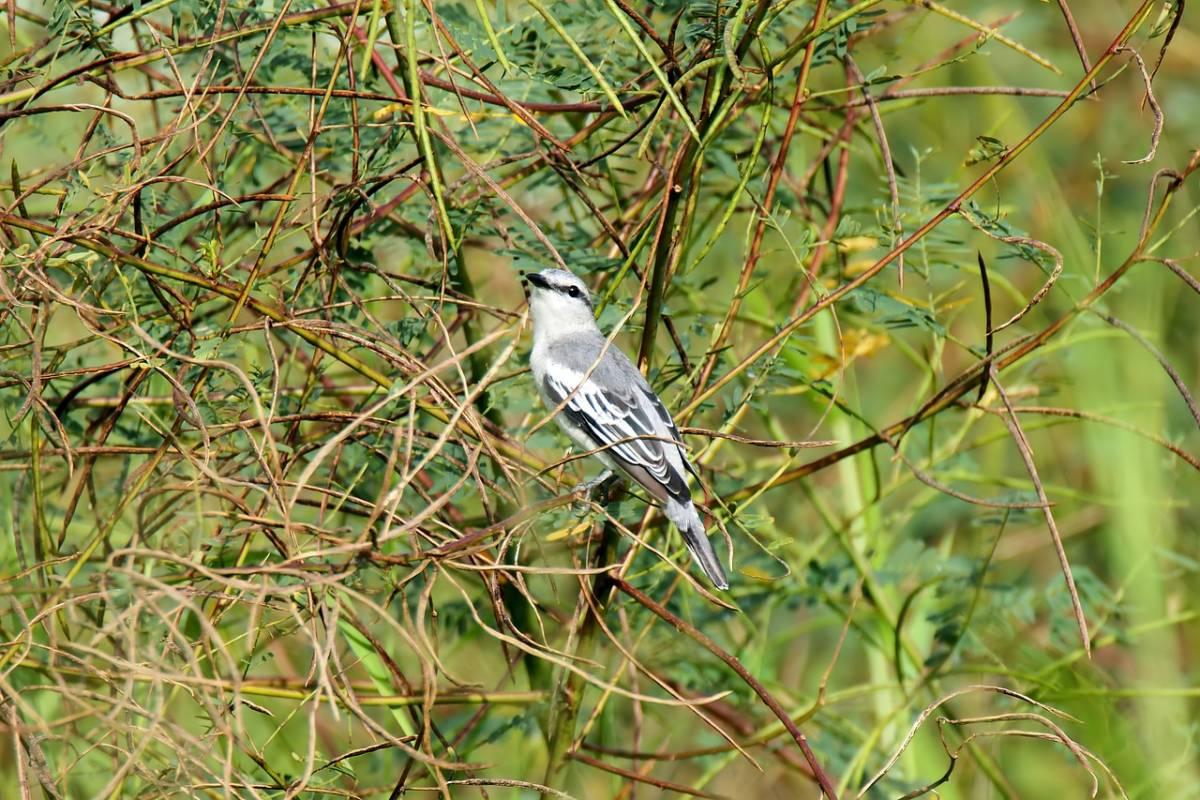
- Name: Polynesian triller
- Scientific name: Lalage maculosa
- Conservation status:
The Polynesian triller is a species of passerine bird native to the southwest Pacific, in which it has multiple subspecies, spread throughout a lot of islands. It is about 15 to 16 cm / 5.9 to 6.3 in and has brown, black, white, or gray (or a combination of all of these) plumage.
This bird has a short, high-pitched song and is particularly noisy. It feeds on insects (primarily caterpillars), as well as fruits.
8. Pacific black duck
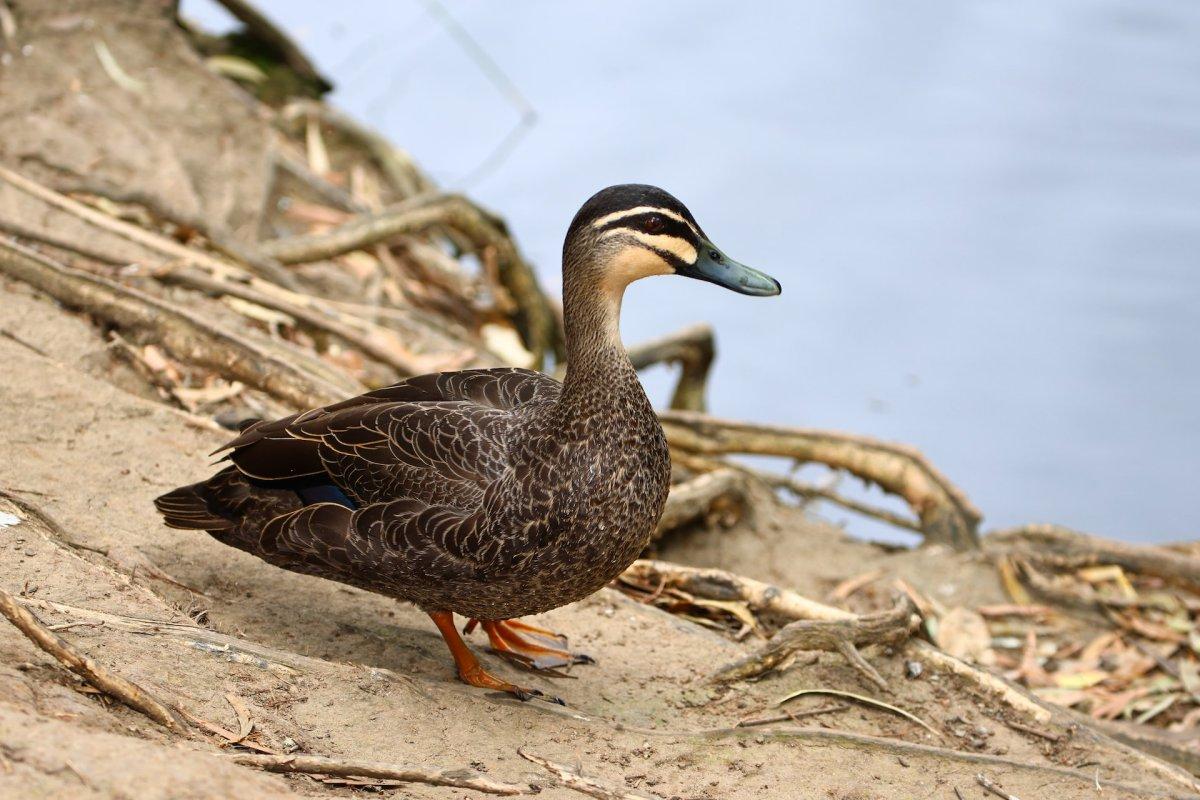
- Name: Pacific black duck
- Scientific name: Anas superciliosa
- Conservation status:
The Pacific black duck, also known as the PBC or the gray duck, is a species of duck native to southeastern Asia and Oceania, including New Zealand, Indonesia, and multiple islands in the southwestern Pacific.
This duck inhabits a wide range of wetland habitats, and is mainly vegetarian, feeding on seeds. Occasionally, it will also eat insects, mollusks, and crustaceans, and venture on land to seek food in damp, grassy areas.
9. Red junglefowl
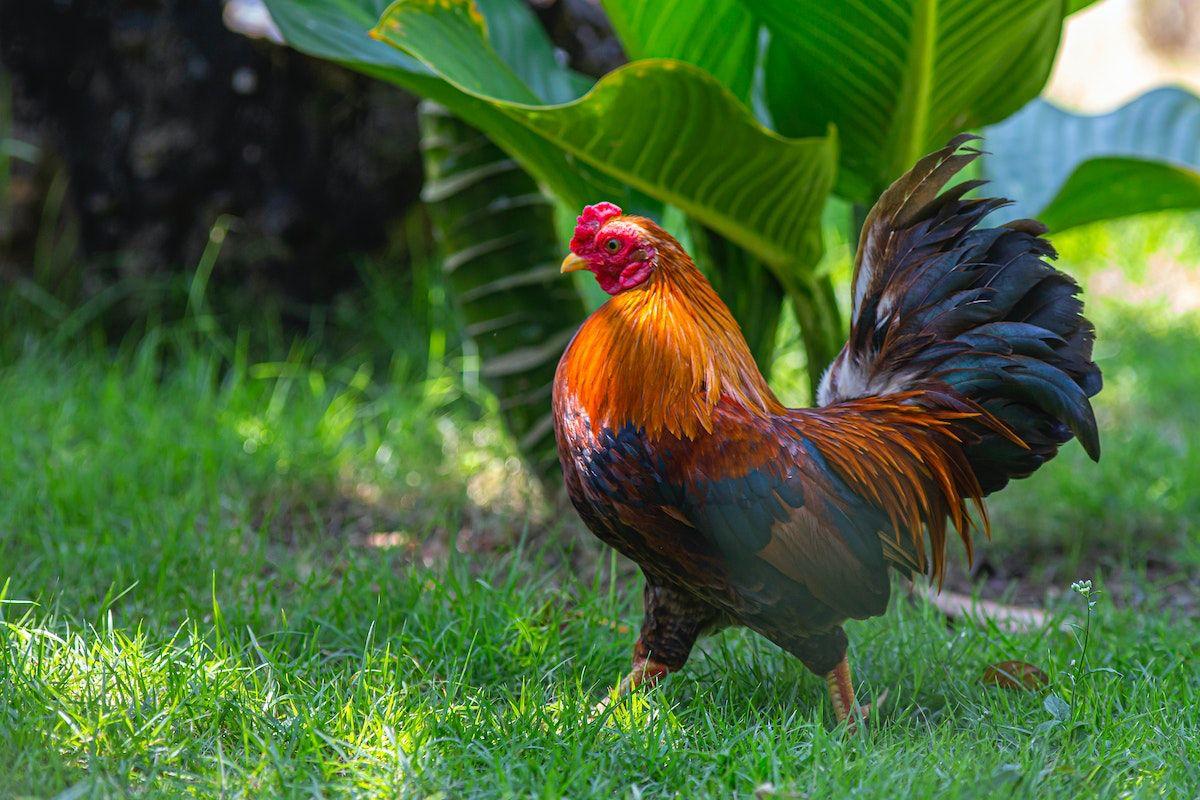
- Name: Red junglefowl
- Scientific name: Gallus gallus
- Conservation status:
The red jungle fowl, formerly known as the Bankiva Fowl or simply the Bankiva, is a species of tropical bird of the pheasant family. It is native to southern and southeastern Asia, as well as Oceania and its multiple islands.
This bird was proven to be domesticated about 8,000 years ago, and its domestic form has spread throughout the world since then. In the wild though, it lives in areas with seeds or ripe fruits, such as fields of domestic grain, stands of bamboo, and fruit plantations.
10. Pacific sheath-tailed bat
- Name: Pacific sheath-tailed bat
- Scientific name: Emballonura semicaudata
- Conservation status:
As you must have guessed by now, the wildlife of Tonga is made of bats, marine animals, and birds, and there are little to no terrestrial mammals.
The Pacific sheath-tailed bat, also known as the Polynesian sheath-tailed bat, is a species of bat native to Tong, Samoa, Guam, Fiji, and other islands. It is considered endangered due to habitat loss, and roosts in only three caves. Its subspecies are highly fragmented, and only 500 individuals of Emballonura semicaudata rotensis remain.
11. Pygmy killer whale
- Name: Pygmy killer whale
- Scientific name: Feresa attenuata
- Conservation status:
The pygmy killer whale is a species of oceanic dolphin. Very poorly known and rarely seen, it inhabits the tropical and subtropical waters of the world and gets its name from its resemblance with the much more imposing killer whale.
This dolphin is extremely aggressive in captivity, and it is the smallest cetacean with the word “whale” in its name. It lives in groups of about 4 to 30 individuals, sometimes more.
12. Many-colored fruit dove
- Name: Many-colored fruit dove
- Scientific name: Ptilinopus perousii
- Conservation status:
The many-colored fruit dove is a species of bird of the dove family. It inhabits some islands in the southwest Pacific Ocean, namely Tonga, the Samoan Islands, and Fiji. It inhabits subtropical and tropical moist lowland forests and can is mostly common in Tonga and Fiji.
This dove feeds high in the canopy, usually on berries and fruit, and nests on small platforms in which it lays one egg.
13. Giant wood spider
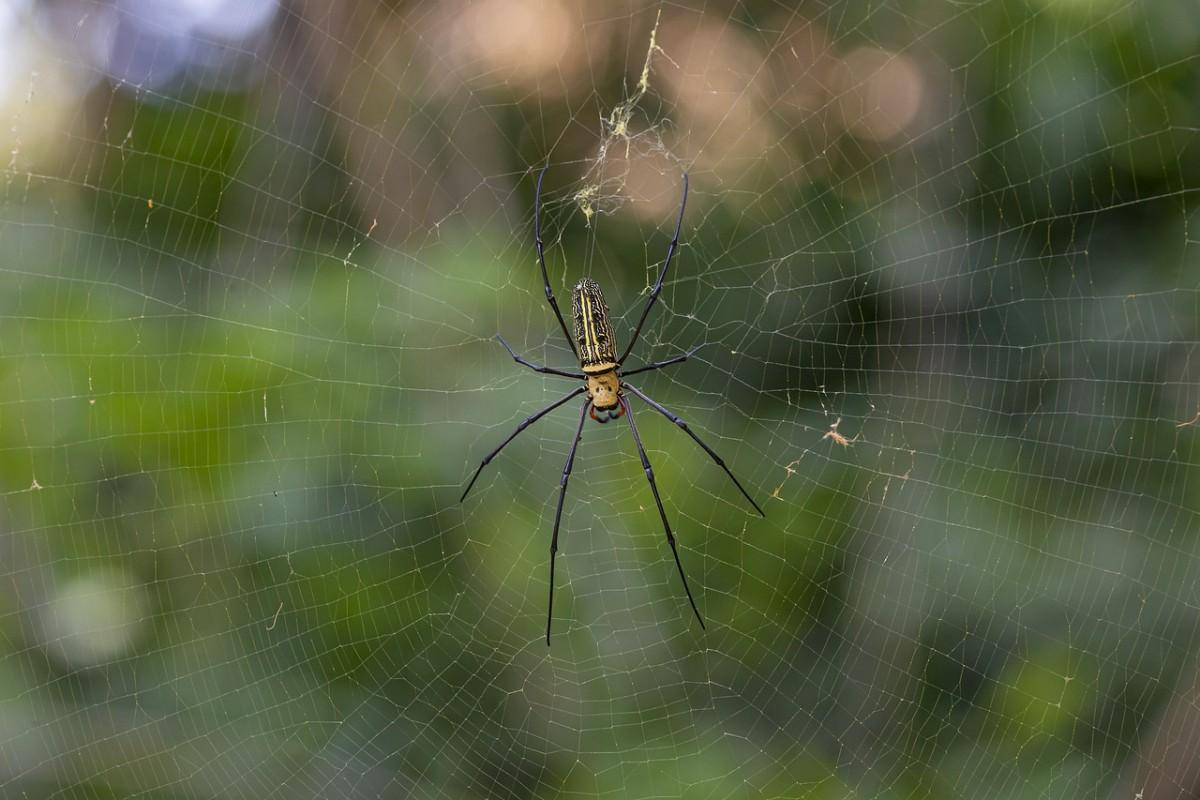
- Name: Giant wood spider
- Scientific name: Nephila tetragnathoides
- Conservation status:
The giant wood spider, also known as the banana spider, the golden silk orb-weaver, or the golden orb-weaver, is a fairly common animal in Tonga. It is known for its impressive body size (measuring around 4.8 to 5.21 cm / 1.5 to 2 in), as well as its large, meticulously woven web.
This spider spins webs between trees in Tonga. It feeds on multitudes of insects and seldom eats bats and birds that got caught in its strong web.
14. Wandering albatross
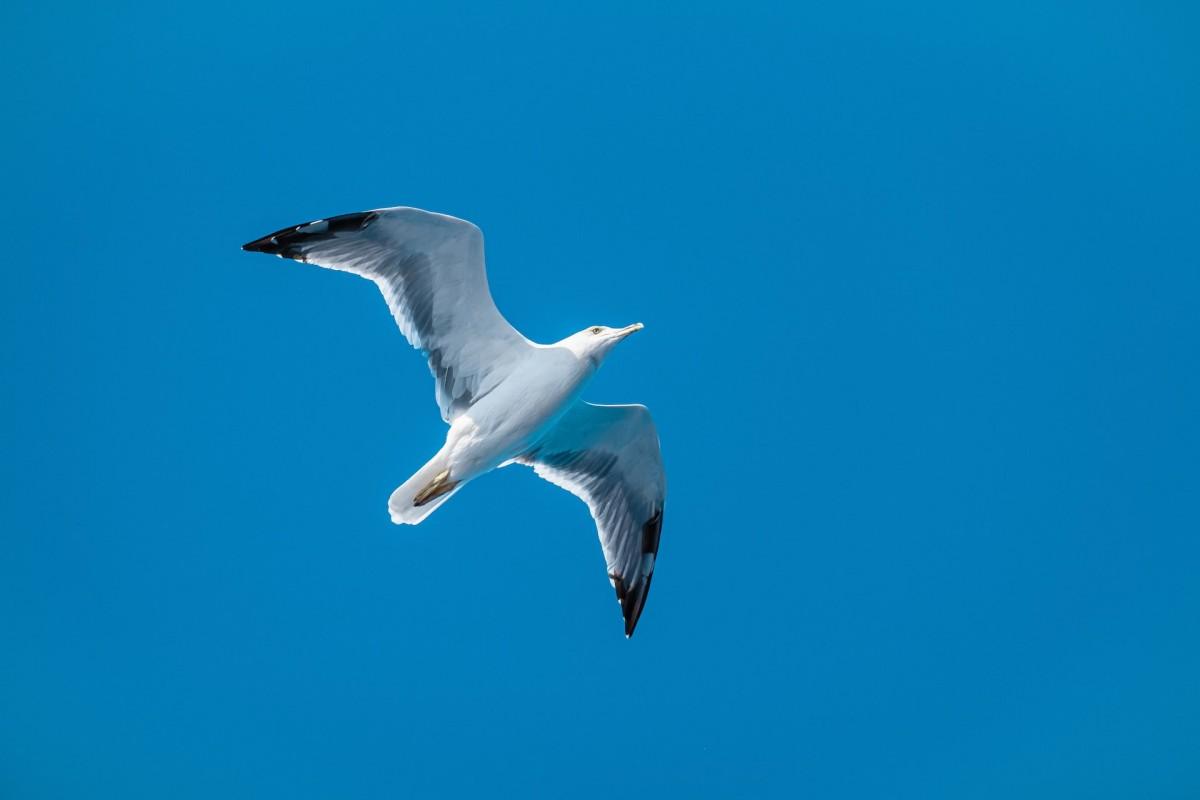
- Name: Wandering albatross
- Scientific name: Diomedea exulans
- Conservation status:
The wandering albatross, also known as the snowy albatross, the white-winged albatross, or the goonie, is a large species of seabird found in the southern parts of the Southern Hemisphere. It gets its name from its tendency to wander a lot, with some individuals traveling more than 120,000 km / 75,000 mi in a single year!
This albatross is one of the largest, but also one of the most well-studied birds in the world.
15. Masked booby
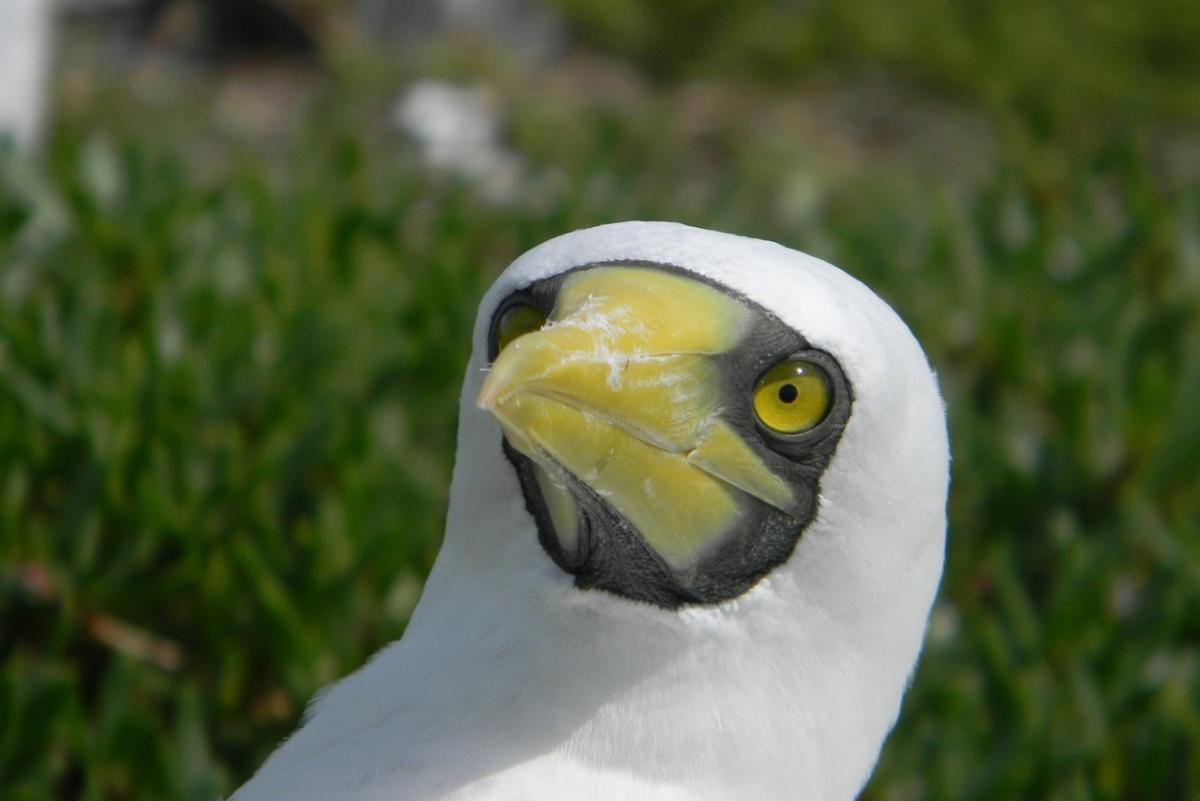
- Name: Masked booby
- Scientific name: Sula dactylatra
- Conservation status:
The masked booby, also known as the blue-faced booby or the masked gannet, is another large species of seabird native to much of the Pacific Ocean, the western Atlantic Ocean, and some coastlines of the Indian Ocean.
This bird has a long, pointed yellow beak, as well as a pointed tail. It nests in colonies in tropical environments, usually on islands far from the mainland and close to deep water.
16. Fraser’s dolphin
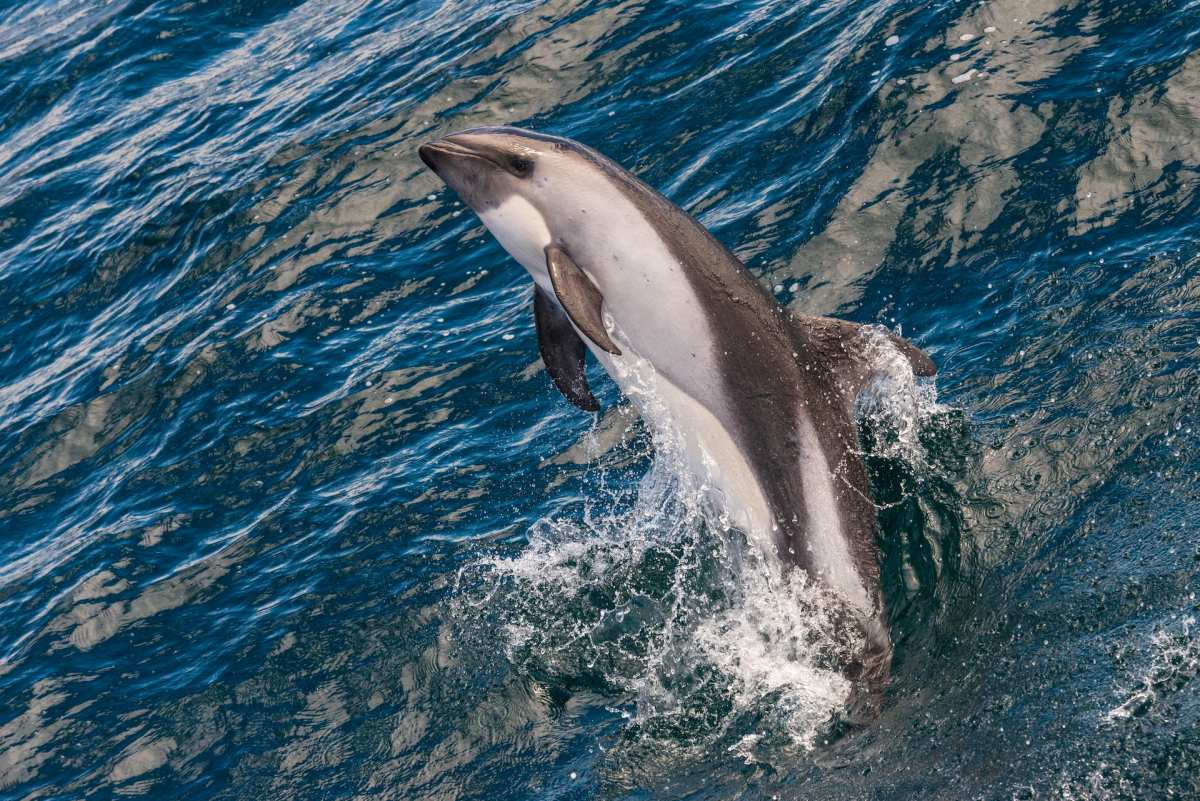
- Name: Fraser’s dolphin
- Scientific name: Lagenodelphis hosei
- Conservation status:
Fraser’s dolphin, also known as the Sarawak dolphin, is a species of cetacean native to the deep waters of the Pacific Ocean, and in lower numbers to the Atlantic and Indian Oceans.
This dolphin is fairly common, and can usually be seen in deep, tropical waters around the world. Although it is considered of least concern, no global population estimates exist, as it is very difficult to survey such a species.
17. Green sea turtle
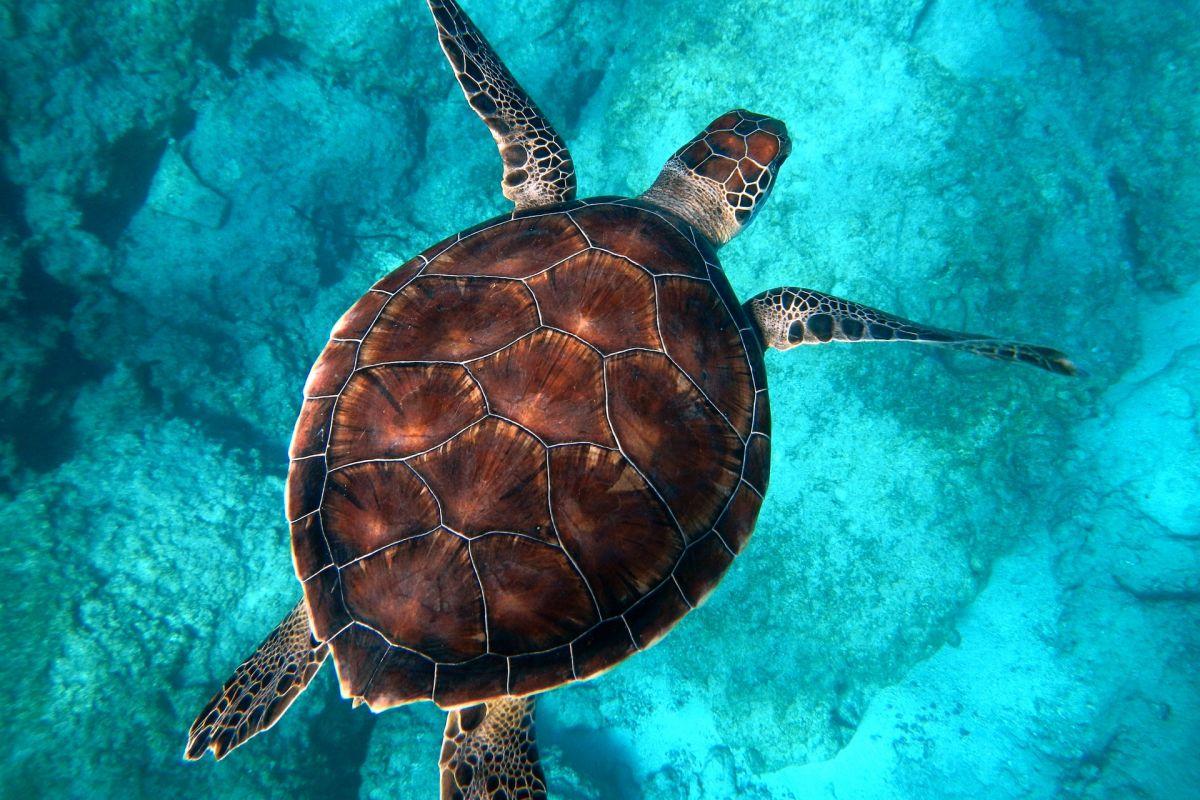
- Name: Green sea turtle
- Scientific name: Chelonia mydas
- Conservation status:
The green sea turtle, also known as the Pacific green turtle, the black turtle, or simply the green turtle, is a species of sea turtle native to subtropical and tropical seas around the world.
This turtle has a peculiar place in Tonga, being both protected due to its seriously endangered status and also eaten as part of religious ceremonies. If you are lucky enough and dive around the coastline, you might spot a green sea turtle!
—
So there you have them, these were my 17 native animals of Tonga. I hope you enjoyed this list and that you learned something new today.
In case you want to learn more about Tonga wildlife, feel free to keep reading, as I still have lots of things to tell you about:
Endangered Animals of Tonga
This is definitely the saddest part of the list, but it is very important to raise awareness. Because of this, let’s go through the list of endangered animals in Tonga.
Here are the animals in danger of extinction in Tonga.
- Tonga ground skink
- Oceanic parrot
- Beck’s petrel
- Oceanic whitetip shark
- ‘Eua forest gecko
- Olive small-scaled skink
- Giant manta ray
- Zebra shark
- Phoenix petrel
- Lau banded iguana
- and 13 more…
To see the full list of endangered species in Tonga, head over to the International Union for Conservation of Nature’s Red List.
What is the National Animal of Tonga?
The national bird of Tonga is the Tongan megapode.
In fact, Tonga has no official national animal, but only a national bird, the Tongan megapode, also known as the Niuafo’ou megapode or the Polynesian megapode.
Endemic to Tonga, it is a terrestrial bird that is the pride of the archipelago for its uniqueness. While there used to be 5 megapode species in Tonga, only the Tongan megapode remains, and it is also seriously on the decline.
How Many Animals Native to Tonga?
What is the diversity of native animals in Tonga?
Let’s look at the total number of species of Chordata (mammals, birds, fishes, and reptiles).
Total number of animal species in Tonga: 1,321 (9,917 in total in Oceania)
Are there snakes on the island of Tonga?
No, there are no snakes on the island of Tonga.
However, around it, sea snakes are fairly common! The snake you are most likely to encounter in Tonga is the banded sea krait. It has a unique black-and-white pattern all over its body, and although its bite is deadly, it is very docile. The only times you could face a banded sea krait would be if it were washed ashore, or voluntarily came on land to give birth.
More About Animals in the World!
Loved these Tonga animal facts? Want to see what animals live in other countries?
Then check out these posts:
Or click here to see ALL the facts up on the blog! Spoiler alert: there’s A LOT of them.
Share the knowledge! Click on the buttons below to share information about these famous animals in Tonga with your friends, and help them learn more about the world 🙂
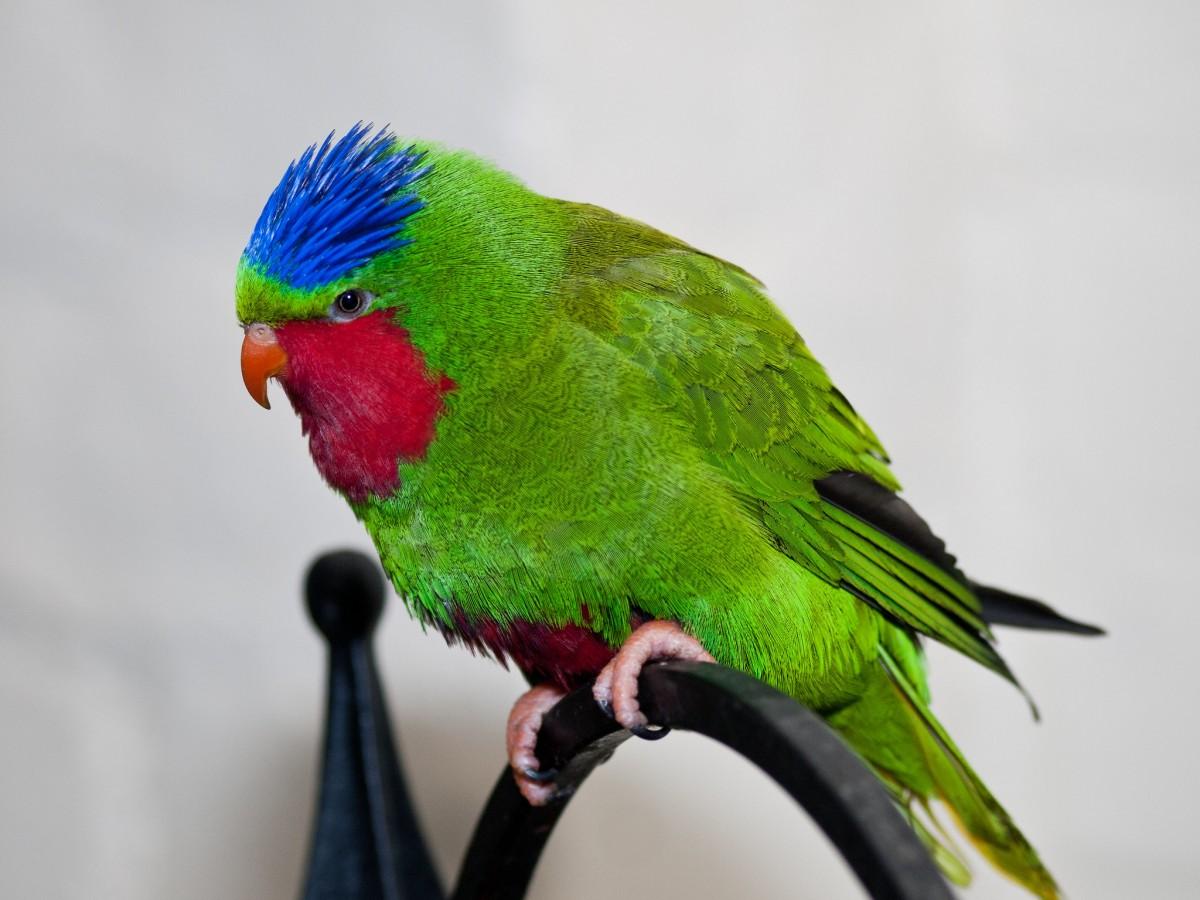
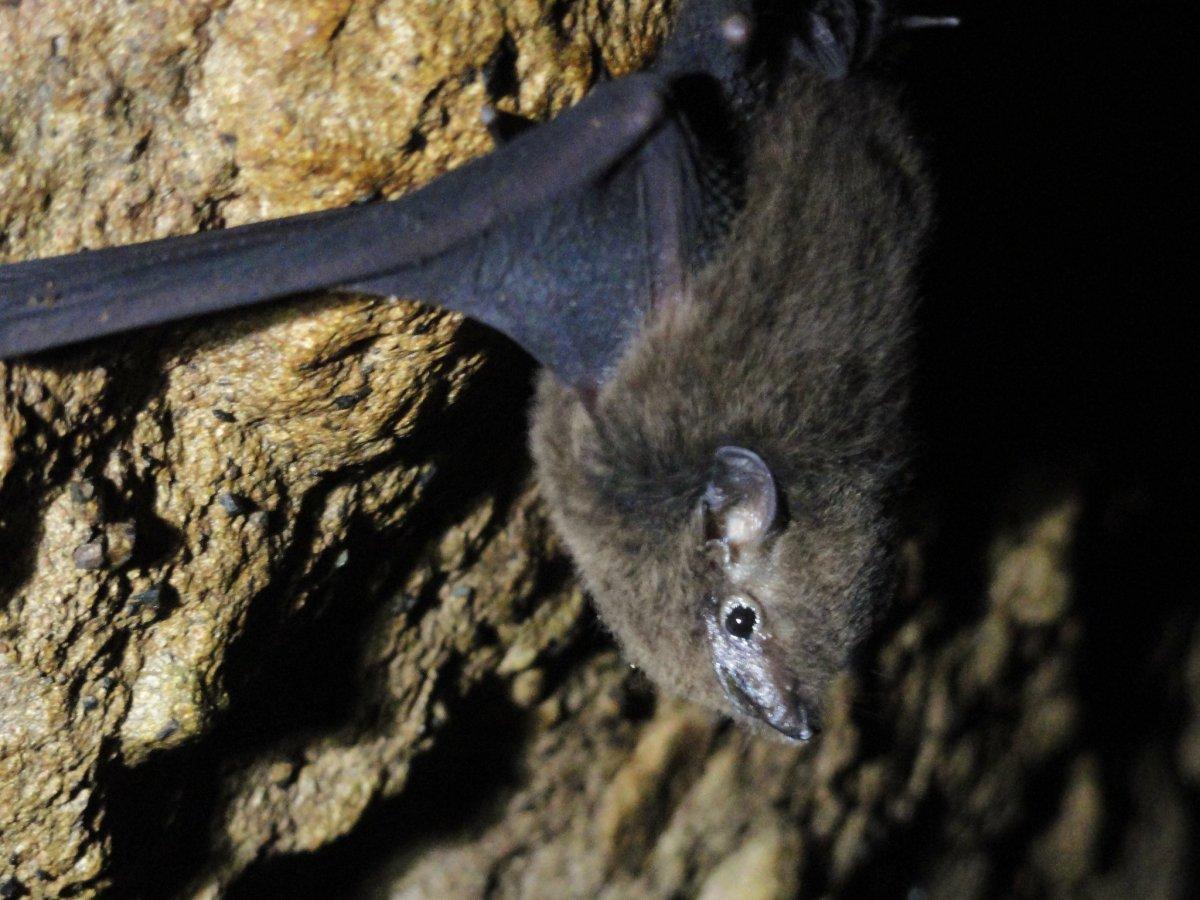
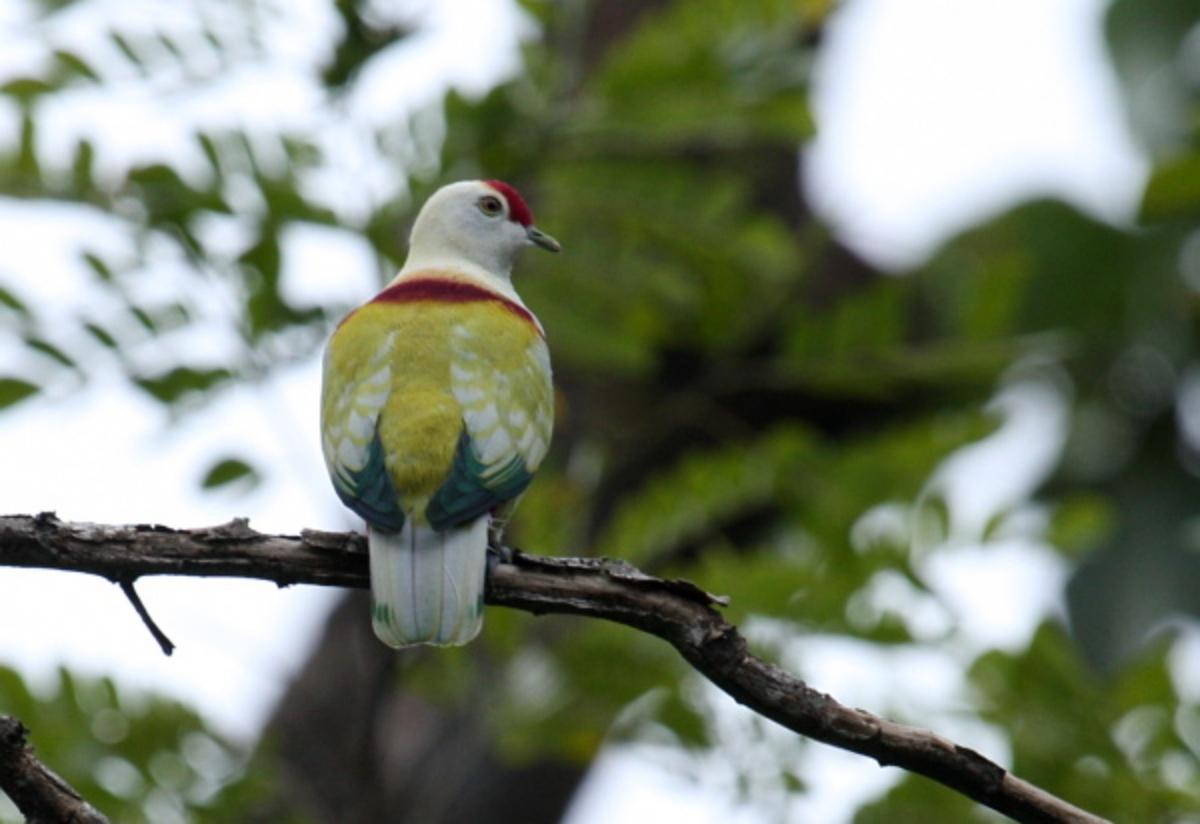

![22 Wild Animals in Estonia [Wildlife in Estonia]](https://www.kevmrc.com/wp-content/uploads/2022/06/22-wild-animals-in-estonia.jpg)
![25 Wild Animals in Scotland [Wildlife in Scotland]](https://www.kevmrc.com/wp-content/uploads/2022/10/25-wild-animals-in-scotland.jpg)
![21 Wild Animals in Western Australia [Wildlife in Western Australia]](https://www.kevmrc.com/wp-content/uploads/2023/01/21-wild-animals-in-western-australia.jpg)